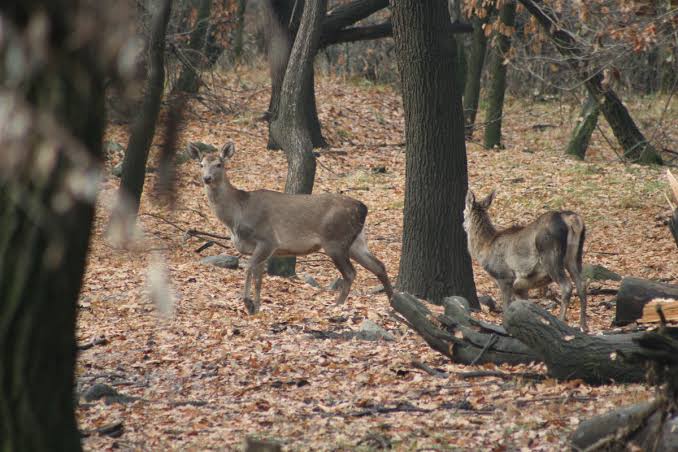Umaisar Gull Ganie
Srinagar, Jun 26: After two years, Kashmir stag, also called hangul, an emblematic species of the Jammu and Kashmir region, has shown a marginal increase, much to the delight of wildlife department and Hangul lovers.
Classified as critically endangered by the International Union for Conservation of Nature (IUCN) Red List and protected under the Indian Wildlife (Protection) Act of 1972, urgent conservation measures are required to safeguard this majestic species, reads the fresh survey conducted by wild life department along with many NGOs, a copy of which is available with the news agency—Kashmir News Observer (KNO).
“Hangul (Cervus hanglu) is one of the easternmost distributed species of red deer, inhabiting the temperate coniferous forests in the western Himalayas of Jammu and Kashmir. Once widely distributed in the mountains of Kashmir and parts of Himachal Pradesh, the species has experienced a drastic reduction in its distribution range due to habitat fragmentation and associated factors. However, a fresh survey has brought smiles on the faces of wildlife department and hangul lovers across Kashmir.
The Department of Wildlife Protection, Jammu & Kashmir (DWLP), in collaboration with the Wildlife Institute of India (WII) and local research institutions, has been actively monitoring the Hangul population in the Dachigam landscape since 2004. Through scientific methods involving transect surveys, camera trapping, and genetic analysis, researchers, field staff, and volunteers have been working tirelessly to understand the species’ population dynamics, movement patterns, and genetic health.
Recent population monitoring exercises estimate the Hangul population within Dachigam National Park to be around 275, with an additional 14 individuals (total 289) recorded in the Shikargarh area. However, several challenges continue to threaten the species’ survival. Habitat degradation resulting from excessive livestock grazing, grass cutting, and fuel and firewood collection, as well as human trampling due to military forces and government departments operating in the region, have contributed to the decline of Hangul.
Moreover, ecological factors such as low breeding rates, disturbed viability, and decreased genetic heterozygosity pose significant risks to the Hangul population. Predation by common leopard and Asiatic black bear, which primarily target young deer, exacerbates the species’ vulnerability.
“In response to these threats, a comprehensive Conservation Action Plan (CAP) for Hangul has been formulated. The CAP emphasizes landscape-level planning to restore historical habitats and establish ecological corridors, facilitating the movement and dispersal of Hangul deer. The aim is to provide the species with ample space and resources for their survival and increase genetic diversity,” the survey reads, adding that the DWLP, along with its partners, is actively engaging in awareness campaigns to rally public support for Hangul conservation.
“Educating local communities, students, and tourists about the importance of protecting this unique species and its habitat is crucial to foster a sense of responsibility and stewardship. By involving local communities in conservation efforts, the plan aims to create a sustainable model where humans and wildlife can coexist harmoniously,” the survey reads. “To address the issue of habitat degradation, the CAP proposes stricter regulations and enforcement to minimize livestock grazing, limit grass cutting, and regulate human activities in sensitive Hangul habitats. The plan also calls for increased monitoring and surveillance to combat poaching, which remains a significant threat to the species.”
The survey further reads that the genetic health of the Hangul population is a key concern. Studies conducted by the WII and SKUAST-Kashmir have indicated a decrease in genetic heterozygosity over time, leaving the species vulnerable to inbreeding depression. To mitigate this, the CAP stresses the importance of genetic management and establishing breeding programs to ensure the long-term survival of the species. Collaborative efforts between conservationists, researchers, and wildlife authorities are crucial in implementing effective genetic management strategies.
Talking to KNO, Altaf Hussain Dentoo, Wildlife Warden Central division, said that it was a welcome development to see a rise in Hangul population after two years,” he said.” 261 Hanguls were registered in census 2021.”
The major threat to this rare species is that its habitat should remain untouched and without any pressure. “Nearby corridors at Khonmoh and Tral should be more protected so that Hangul population will increase more,” he said—(KNO)







